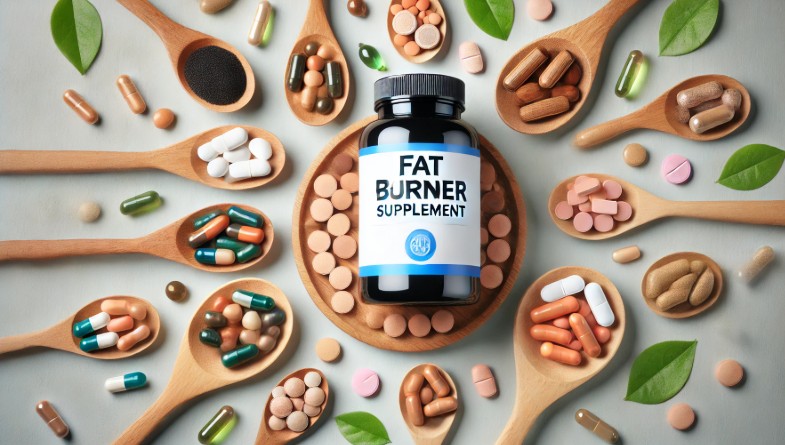
Calories refer to the energy in food, which is present in chemical bonds.
The body requires a constant supply of energy from food to sustain life. Taking in less energy from food than the body uses creates an energy or calorie deficit.
As a result, the body has to generate energy by burning nutrition stored in its fat and muscle. This can lead to a decrease in body mass, also known as a reduction of body mass index (BMI), or weight loss.
This article will explain how the CICO diet works, its benefits, and its effectiveness. It will also detail the risks and disadvantages of the diet for weight loss.
BMI is a measure of a person’s body fat based on height and weight. However, studies show that it is a poor indicator of body fat percentage. BMI can be misleading because the measure does not account for overall body composition. The BMI measurement overlooks bone density, muscle mass, and other considerations.
For more information, contact a doctor regarding other body fat assessment methods.

“CICO” stands for “calories in calories out.”
The premise of a CICO diet is that you can lose weight as long as you are in a caloric deficit by consuming fewer calories than your body uses.
What many people think of as “going on a diet” or reducing food intake to lose weight are all part of the CICO principle.
It is possible to reach a calorie deficit by restricting the amount of food or by increasing your energy expenditure. Exercise is one way to increase your energy expenditure.
Though a calorie deficit will reduce body mass, other factors contribute to the body’s metabolism, mass, and health.
Sometimes people can overestimate their energy expenditure, or how many calories they burn, and not know their calorie intake. Tracking calories more closely may help some people better understand their diet.
Consuming fewer calories than you use can be a benefit to reduce BMI, which may be beneficial to the health of some people with overweight or obesity. Excess body mass can in some cases be life threatening and cause serious health conditions, such as:
The Centers for Disease Control and Prevention (CDC) notes that losing even 5–10{35112b74ca1a6bc4decb6697edde3f9edcc1b44915f2ccb9995df8df6b4364bc} of your total body weight can lead to better health, such as improvements in blood glucose, cholesterol, and blood pressure levels.
Also, weight loss can lead to further benefits in many aspects of health, affecting areas such as:
- physical health
- energy levels
- mobility
- mood
- self-confidence
There are numerous limitations and drawbacks to the CICO diet. Some CICO diet plans may not take into account all of the factors that impact body mass.
CICO may take only the number of calories a person consumes into account. Some CICO diet plans may not consider the nutritional value of different foods nor acknowledge the importance of calories coming from nutritious sources.
The body needs appropriate levels of different nutrients to support function and health. Being in a calorie deficit may not necessarily improve health if the foods you are eating are not nutritious enough.
Also, if the goal of supporting a moderate weight is to improve health, then other factors are also important.
Theoretically, a person could eat a low calorie diet of ultra-processed food and still lose weight. However, this would not be the best diet for overall health and disease prevention.
A 2021 study indicates that dietary patterns high in ultra-processed foods and sugar may increase the risk of developing health conditions such as cardiovascular disease.
CICO also does not consider how different foods impact hunger and satiety or energy expenditure differently.
Not all CICO diets will acknowledge how types of body mass reduction have different effects.
Reducing body mass with CICO and other energy deficits can lead to the loss of fat and muscle mass. However, loss of muscle or lean mass may have negative effects on health.
To reduce body mass while preserving muscle, researchers in a 2017 study specify that a lower calorie diet should include higher but not excessive levels of protein.
Learn more about foods high in protein and recommended protein intake.
Macronutrient composition
The body processes various foods in different ways, which can impact energy restriction and weight loss. For example, diets that have a lower glycemic load may lead to greater weight reduction than low fat diets.
Also, foods with higher levels of protein and fiber can be more filling. A 2018 study showed that consuming a high protein, high fiber drink led to reduced hunger and desire to eat, resulting in a reduced food intake.
Long-term maintenance and regaining mass
It may be difficult for some people to maintain an energy deficit over a long period. This can lead to “yo-yo dieting,” whereby people start and stop restrictive diets, repeatedly losing and regaining body mass.
This can be harmful to physical health and impact mental health and quality of life.
Body mass increases after a reduction are common in people in an energy deficit, according to researchers from a 2018 study. Energy deficit approaches may not be as effective long term.
Large energy deficits can also change how the body metabolizes energy. This can cause the body to compensate for the deficit by increasing hunger and decreasing energy output. As a result, a person’s body mass reduction may slow or they may even gain body mass again.
Psychological and behavioral effects
In addition to complex physical effects, calorie-counting diets can impact mental and emotional health.
Restrictive dieting or calorie-counting may lead to preoccupation with food and have further effects such as:
- lower self-esteem
- depression
- anxiety
- irritability
- nervousness
- disordered eating patterns and eating disorders
Individual differences in nutrition
Nutrition is personal. Everyone has a slightly different biochemical makeup and varying bodily needs. This can be due to factors such as:
- family history and genetics
- race
- ethnicity
- age
- sex assigned at birth
- cultural habits
- sleep quality
- medical conditions
As a result, a diet that may be effective or appropriate for someone else may not be as appropriate for you.
Beginning a CICO diet plan can be overwhelming. For instance, how do you start and how do you follow the plan safely?
First, you will want to know what a caloric deficit would be like for you.
You can calculate how many calories your body typically burns by estimating your basal metabolic rate (BMR) in addition to any extra physical activity you undertake. Also, you will want to include factors such as height and sex assigned at birth.
This will estimate your maintenance calories, or the number of calories necessary to maintain your current body mass.
To create a caloric deficit, you want to eat fewer calories than your maintenance calorie rate.
To calculate your maintenance calories and how many calories you can eat to create an energy deficit, you can use the U.S. Department of Health and Human Services’ calculator.
For your health and safety, consider aiming for a mild calorie deficit. A severe calorie deficit or rapid weight loss may negatively affect health and long-term outcomes for maintaining a healthy BMI. Also, an intense deficit is difficult to sustain.
Consider a wide variety of nutrient-dense foods and focus on overall diet quality. Always consult your doctor before making any significant changes to your diet and activity levels.
Other methods to support a sustainable reduction in body mass over the long term do not require counting calories.
Methods that may help lead to a reduction in BMI include:
- eating smaller, regular meals
- eating a balanced, consistent diet, for example, by:
- eating foods high in fiber, water, and protein
- choosing whole foods
- reducing your intake of highly processed foods
- swapping flavored drinks for water
- reducing alcohol consumption if you drink
- finding a physical activity you enjoy
- using a smaller plate to visually help with portion sizes
Contact your doctor or a licensed nutrition professional for more individualized advice on diet and body mass reduction.
Read more advice on weight loss, including diet and exercise tips.
CICO is a way of eating in which you consume fewer calories than your body uses. This eating approach causes the body to use its energy stores from body tissue, resulting in weight loss. This is known as creating a calorie or energy deficit.
While a calorie deficit and counting calories may help some people reach a moderate body weight, CICO diets can have some limitations. They do not acknowledge the role of other factors contributing to health and body mass, such as the nutritional value of food, how calorie deficits can affect metabolism, and other individual factors.
Contact a doctor or licensed nutrition professional for more individualized and comprehensive advice on nutrition and weight loss and how they may be relevant to your health.








